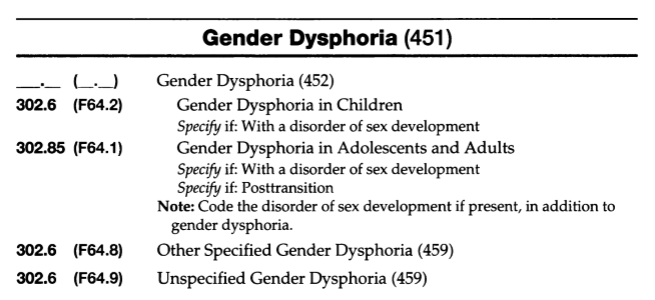
The term gender should not be confused with sexual orientation. This might help society to understand the population and reduce the burden of mental health problems created by the associated stigma. More awareness needs to be created to perceive gender expression as a continuum from male to female rather than fixed binary norms. This can further lead to relationship conflicts with family, peers, friends in various aspects of their daily lives and lead to rejection from society, interpersonal conflicts, symptoms of depression and anxiety, substance use disorders, a negative sense of well-being and poor self-esteem, and increased risk of self-harm and suicidality.
Gender dysphoria dsm 5 manual#
Gender dysphoria (GD) according to Diagnostic and Statistical Manual of Mental disorders (DSM 5) is defined as a “marked incongruence between their experienced or expressed gender and the one they were assigned at birth.” It was previously termed "gender identity disorder."Ĭhildren or adolescents who experience this turmoil cannot correlate to their gender expression when identifying themselves within traditional societal binary male or female roles, which may cause cultural stigmatization.

Some children might experience an incongruity and grow into transgender adults. For most children, this gender assignment corresponds to their gender identity, an innate sense of identifying oneself as male or female.

The origin of the word gender came from the Old French "gendre" (now termed "genre") that meant “kind, sort, genus.” Generally, children are assigned to their gender at birth based on their anatomy and chromosomes.


 0 kommentar(er)
0 kommentar(er)
